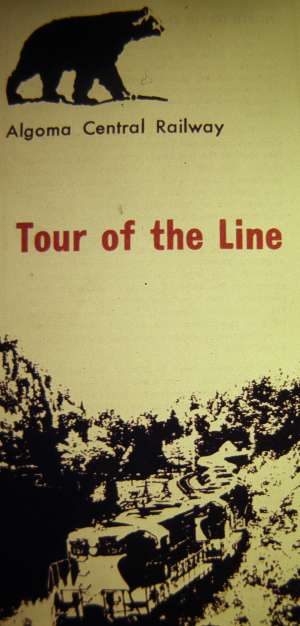
It was easy going across the border back then,
they asked why I wanted to visit Canada, I said to ride the Algoma Central and showed them the brochure and in less than a minute I was on my way.
No passport needed.
Back then, I did my photography with 35mm film. Usually Ektachrome, ASA 64 or 100 back then.
I would suffer for that after all these years, the color dyes aged and shifted to blue.
(I read that later versions of Ektachrome were changed to pick up red colors better, but I think those aged to show a red tint over a whole slide.)
I didn't use genuine Kodak processing (and even their quality didn't always hold up)
and I used the Ektachrome to allow a faster shutter speed so I would blur things.
But from the internet, I learned I should have used a slower shutter to allow the chemical emulsion more time to pick up the colors.
The other thing I didn't pay attention to was opening up the shutter on cloudy rainy days. Which was exactly opposite to what I wanted to do in the days of film. Not only did I lose speed on cloudy days, but I would have had to make it 'worse' by following the rule to expose more. So much is lost on a cloudy or rainy day.
After I copied my old slides to a digital picture, I did a simple color balance correction to take out about half of the color shift from the aging.
I took out some blue and added some green and red. Not perfect, but at least I can show my story.
The biggest help I have had with photography is the digital cameras. Instant reviews.
With film, it took time to finish the roll of 36 exposures, and then two weeks to get the film developed to see what happened. I used to keep a note book of picture locations, shutter speeds, and f-stops. It was a semi-automatic 35 mm camera, watch the light meter needle and then spin in shutter and aperature to make a pointer match the meter needle.
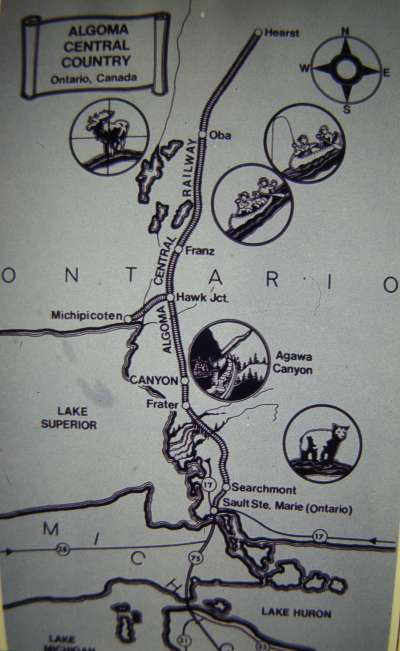 Oh well, there wasn't much color on this trip. It was early July and a sticky muggy hazy hot weather system was parked over Sault St. Marie and the moisture was drifting in from Lake Superior.
Oh well, there wasn't much color on this trip. It was early July and a sticky muggy hazy hot weather system was parked over Sault St. Marie and the moisture was drifting in from Lake Superior.
I actually rode out of that weather as the train traveled 300 miles north and got away from the Lake.
And the next day, I rode south, back into it.
This was the same time and weather system that caused the Derecho 100 mph winds of the Phillilps, Wisconsin, blow down.
At the time, I lived near there, and it was a mess when I got back home after this trip. That blast of wind traveled over 4 states on July 4th, 1977.
I didn't scan every slide of this trip, I left out the blurry ones and the 'just tree scenery' pictures.
For this web page, I show the railroad and track as I saw it while riding their passenger train that ran the full length of their line, 300 miles.
Here's the map from their brochure.
The passenger trains have not run since about ? 2015 ?
But in 2021, a local tour bus company (Lamers transportation of Wisconsin Rapids) is advertising a weekend Autumn color excursion from Sault St. Marie to Agawa Canyon, like the 110 mile Canyon train of the 'old days'.
The CN should be allowing the new operator, WATCO, to take over in 2021.
To the canyon is about a hundred mile trip,
but I took the whole trip, the tour of the line, all the way, about 300 miles.
One day up, one day back.
|
Anyway, it's July 1977. The train to the end of the line left about an hour after the Canyon tourist train. The Canyon tourist train might have a dozen cars, but this train has just 5 for the 300 mile trip. |
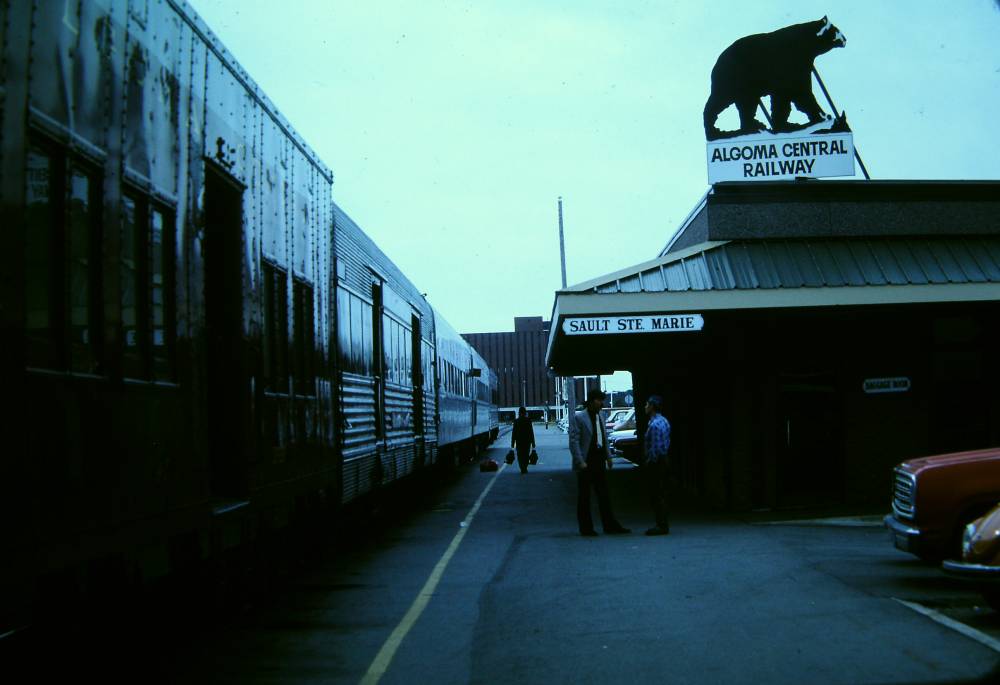
.
|
I don't remember much about how fancy the dining car was, but this was my lunch that I bought on the train. And now I remember why I bought a simple meal that would last, they said the diner car would only be on this train for the first 100 miles. And there was no diner on the return trip at all. I think I bought some candy bars before boarding the return train. |
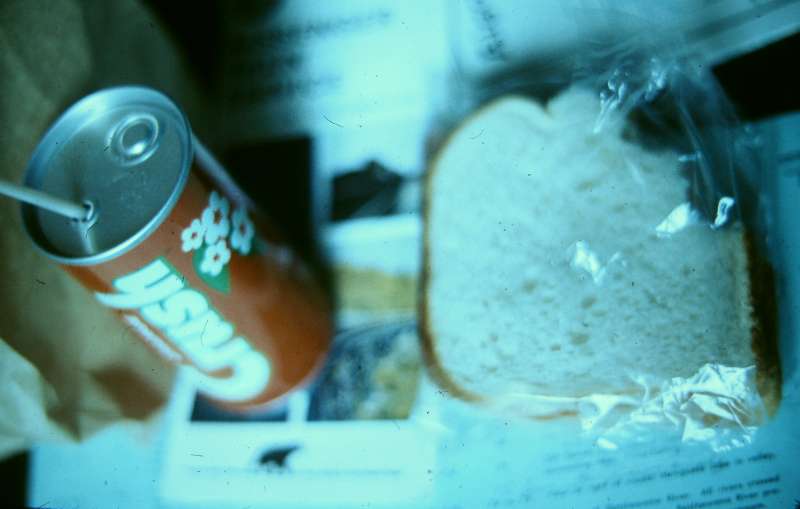
.
| We pulled past the canyon. |
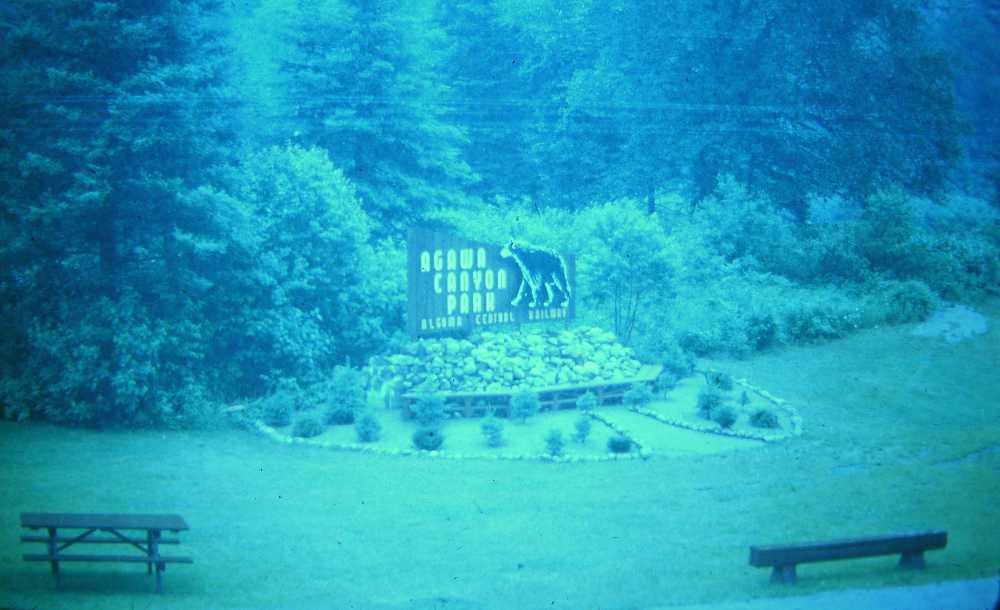
.
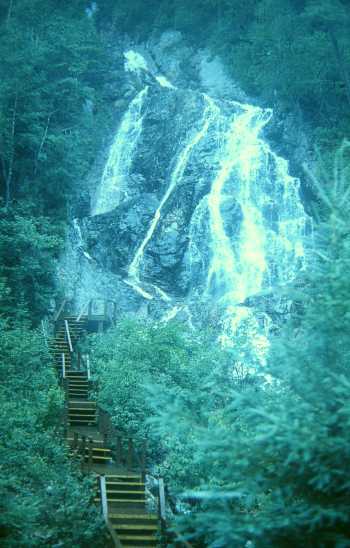 The steps and waterfalls as viewed from my train.
The steps and waterfalls as viewed from my train.
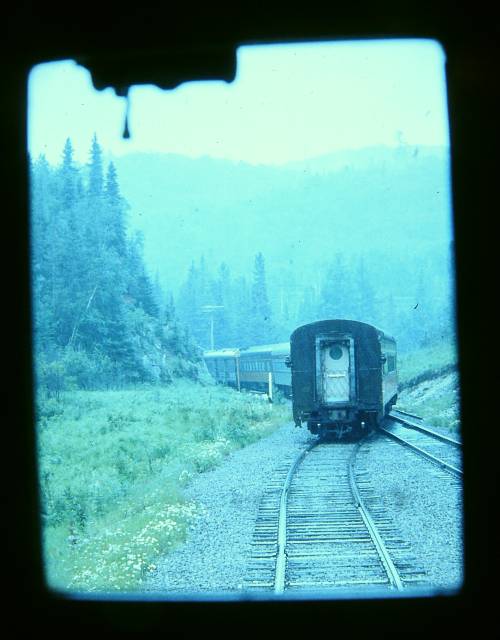 I don't remember much, our train took the siding around the Canyon tourist train
I don't remember much, our train took the siding around the Canyon tourist train
and that kept us from getting in the way of tourists loading onto their train.
Then our rear car (diner) was taken by the Canyon train and it went back to Sault St. Marie.
But that did open up my view out the rear of the train.
Compare this bigger rectangle window with the little round window of that car.
 Looking way ahead to the engine, I could see the canyon getting narrow.
Looking way ahead to the engine, I could see the canyon getting narrow.
The Canyon tour train people wouldn't see this narrow part of the canyon, it's just beyond their stop.
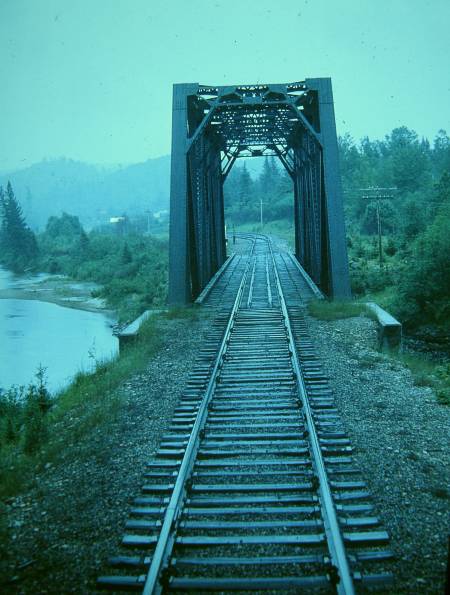 Agawa River bridge, a dozen miles north of the Canyon
Agawa River bridge, a dozen miles north of the Canyon
|
Hawk Junction, where there is a branch to Wawa and an iron mine. (There hasn't been a train to Wawa since 1998) |
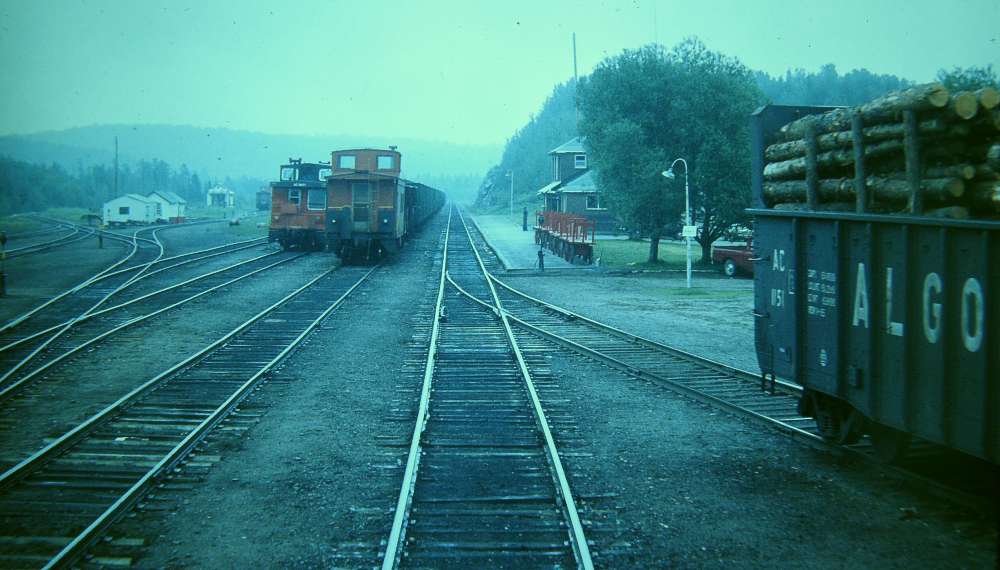
.
| Looking south while passing through ? ? |
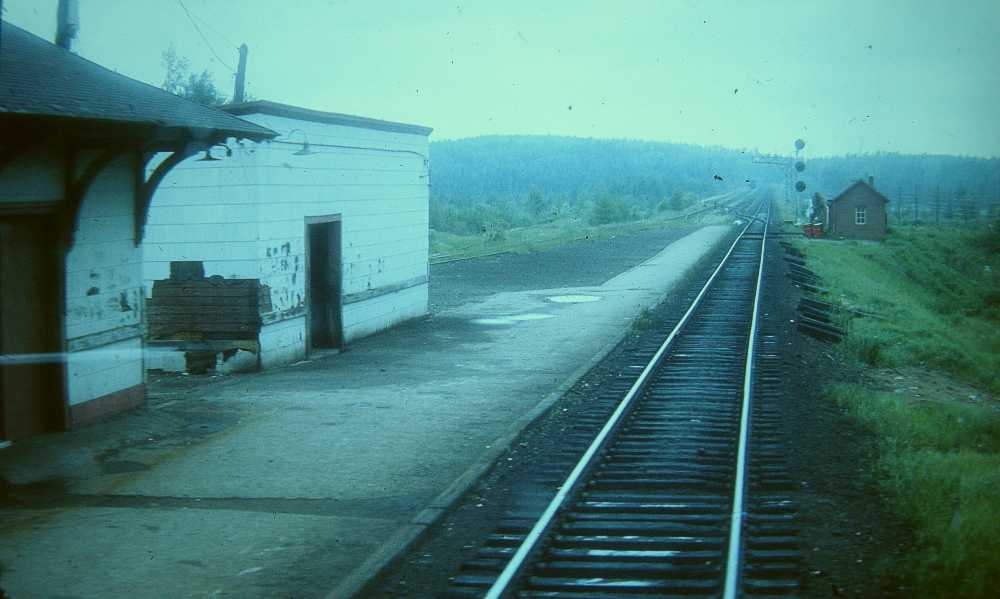
| Going through Franz and the crossing of the Canadian Pacific |
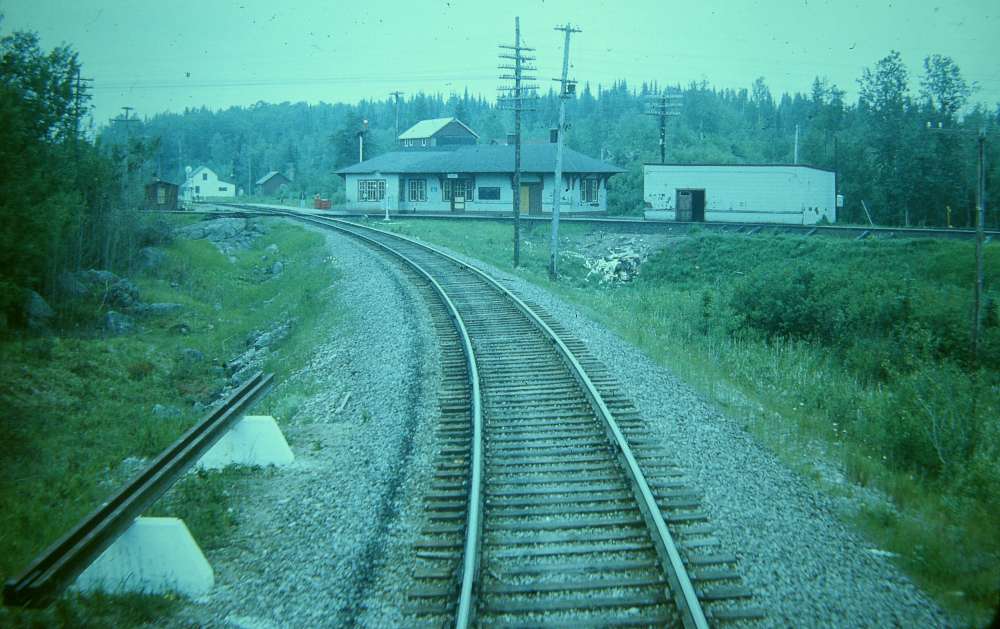
| Southbound freight in a siding. |
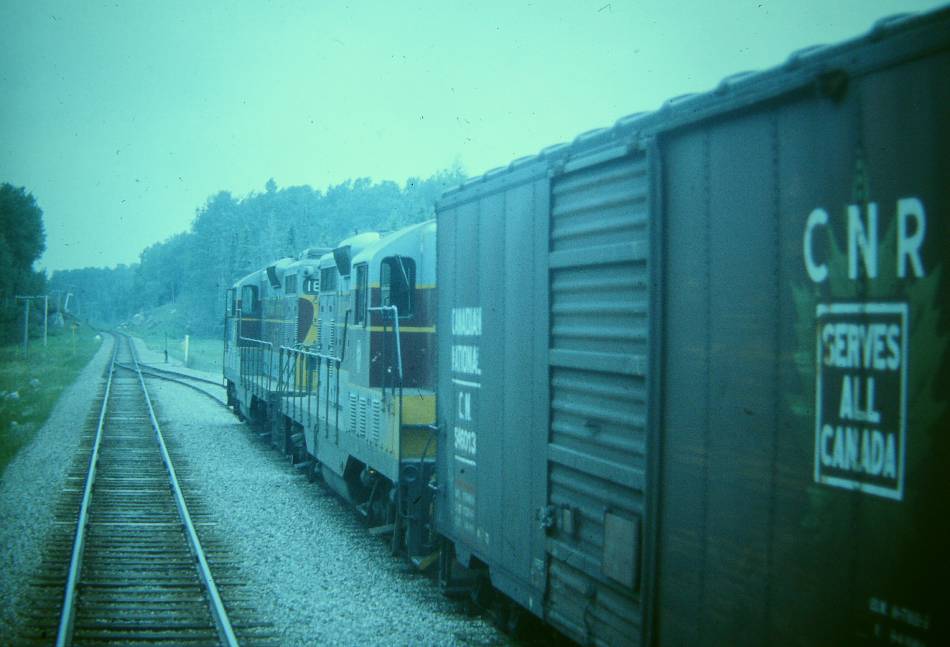
|
And I knew the end of the train would come in to view, so I went to the rear window and snapped a quick picture. It wouldn't be until a week later that I got the slides back from the processor and realized there was a most generous wave from the brakeman on the caboose. A real railroader, with bib overalls, gloves, and striped cap. Probably giving a wave for the roll-by check of our train, although I don't know where our conductor was at the moment. |
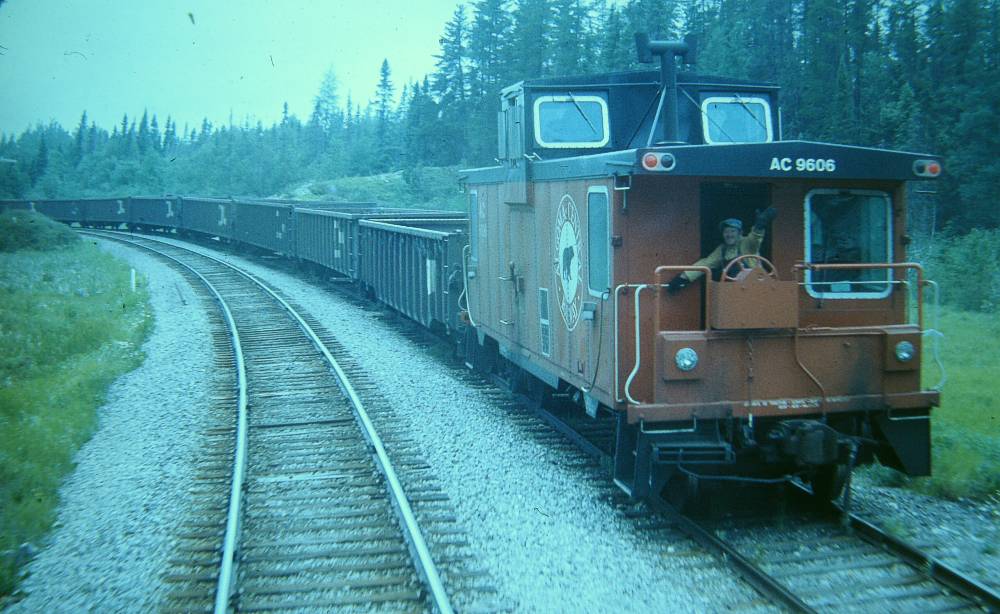
| Best railroader ever |
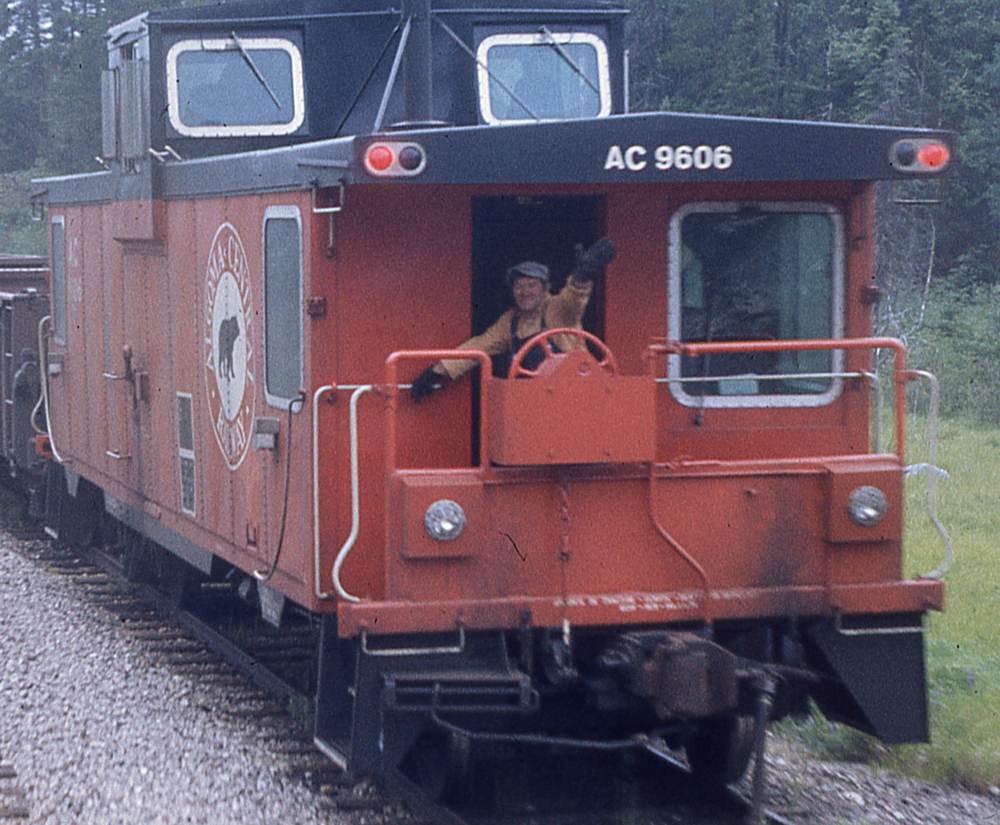
to my second page of my Algoma Central Tour of the Line 1977
to My Main Index Page on the TrainWeb site.
This page was filmed in July, 1977 and wrote about in July, 2021